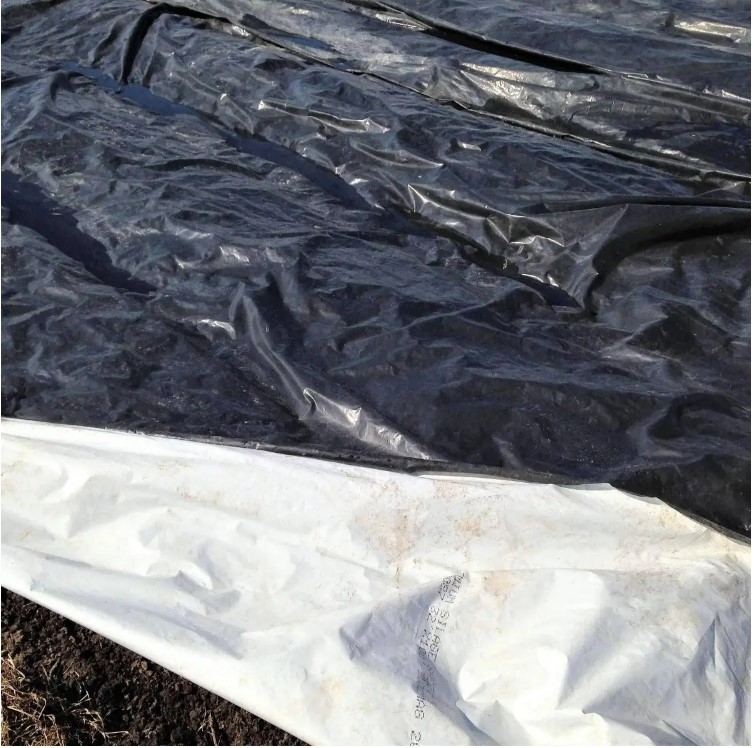Essential Micro-Farm Equipment for Productivity and Profit
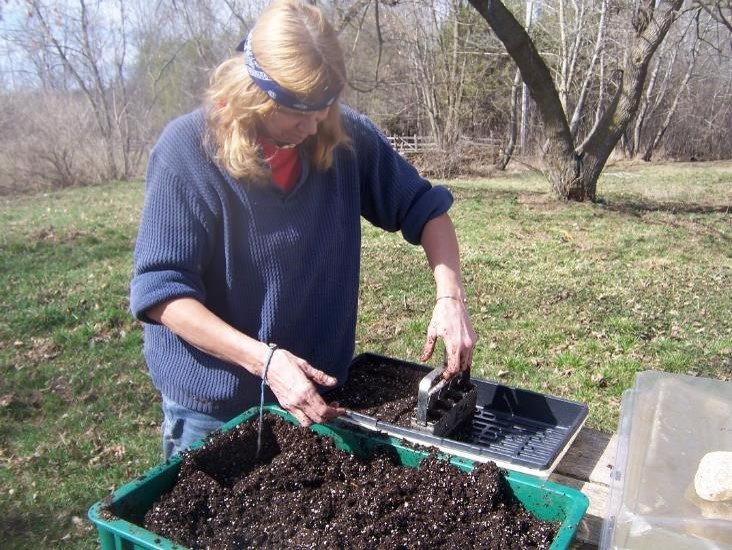 Suzie using the soil blocker. It's an inexpensive but very productive example of micro-farm equipment that will save you time and money. Suzie using the soil blocker. It's an inexpensive but very productive example of micro-farm equipment that will save you time and money.I've read a lot of blog posts about micro-farm equipment (always be learning). Unfortunately a lot of them miss the mark IMHO. Who puts a 'wheelbarrow' on a list of essential farm tools? To me, the right equipment should save you (a) time; (b) money; or preferably (c) BOTH. Small-scale farming offers an opportunity to cultivate a sustainable and thriving agricultural venture, even on limited space. To make the most of your micro-farm, having the right equipment is essential. Here's a few examples of what I consider to be necessary micro-farm equipment for productivity (and profit). Micro-Farming Equipment for Seeding
A market garden is often the centrepiece operation of a micro-farm. There are two pieces of equipment I consider essential here; 1 - the soil blocker; 2 - the six-row seeder; 3- the single row push seeder. All three tools meet criteria (c) above. 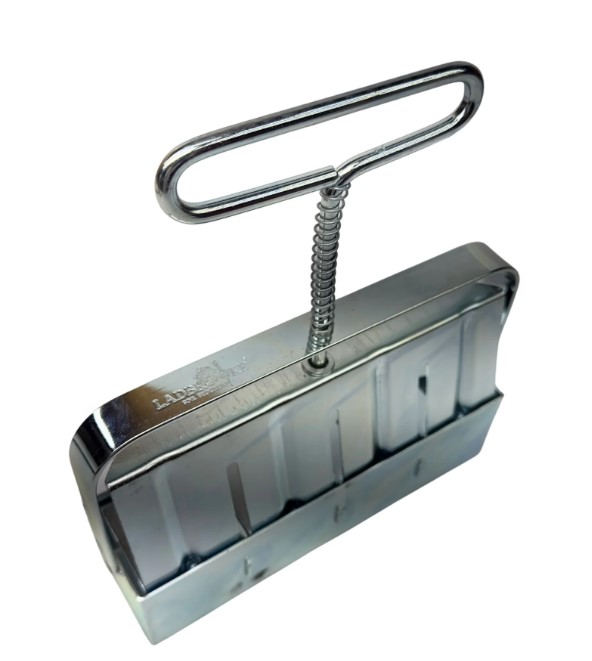 Very sturdy, I've had one for 20 years. Very sturdy, I've had one for 20 years.The Hand-Held Soil Blocker A soil blocker is an amazing little tool that eliminates the need for tray inserts for starting seeds, saving you money. Soil blocks grow sturdy transplants and reduces transplant shock. The soil blocker also makes transplanting more efficient by planting more than one seed in each soil block. These multi-plant blocks can be transplanted into the garden precisely spaced and very efficiently. I use multi-plant blocks for beets and bunching onions. 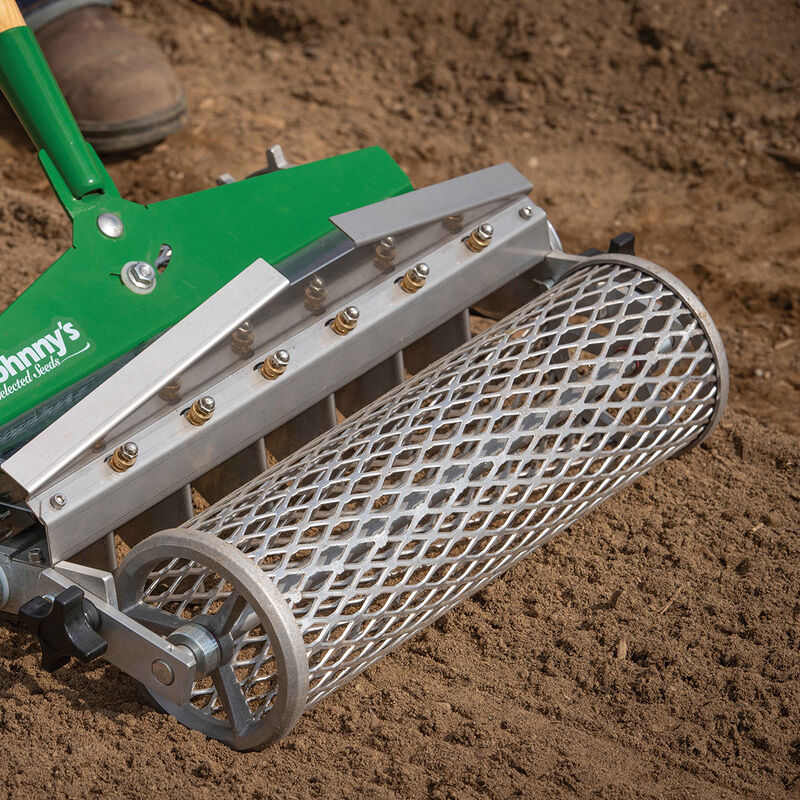 Another great tool from Johnny's Select Seeds Another great tool from Johnny's Select SeedsSix-Row Seeder. This is the tool we use to precisely plant carrots, radishes and turnips. Planting a bed of these small seeds is many times faster and more accurate than planting by hand. You can make two passes on a 30" bed to make 12 rows; or by filling every other hopper make 6 rows 5" apart. You do need to make a very fine seed bed to make sure the tool works effectively. but the labour saved and the precision of seeding gained is worth it. 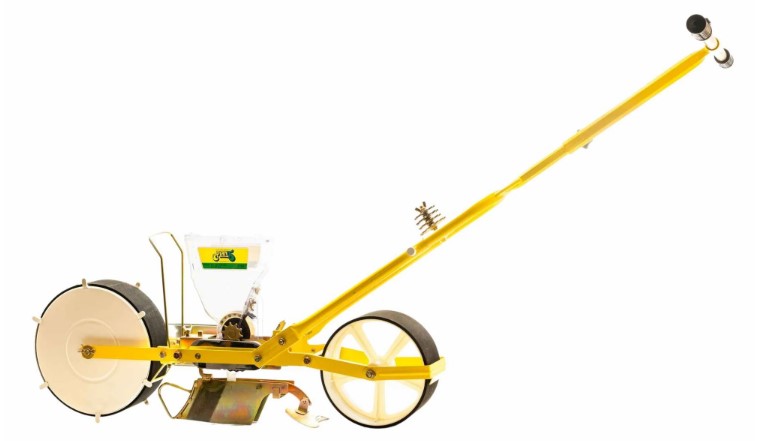 Fast and precise seeding for many different crops Fast and precise seeding for many different cropsPush Seeder The Jang Single Row Push Seeder is a top-tier choice for the market gardener looking to improve seeding accuracy and efficiency. It singulates seed very effectively, reducing your overall seed cost by not dropping excess seed on the ground. It not only speeds up your sowing but also eliminates the need to thin your crop.These two features save you money and labour. There are cheaper options out there; but like with any investment, the buying decision should be based on money spent versus money saved. The Jang seeder is on the right side of that equation. Solidly built to last many years. Micro-Farm Equipment for Garden Prep
Here's a pair of tools that will save you time and money: the two-wheel tractor, and the power harrow. 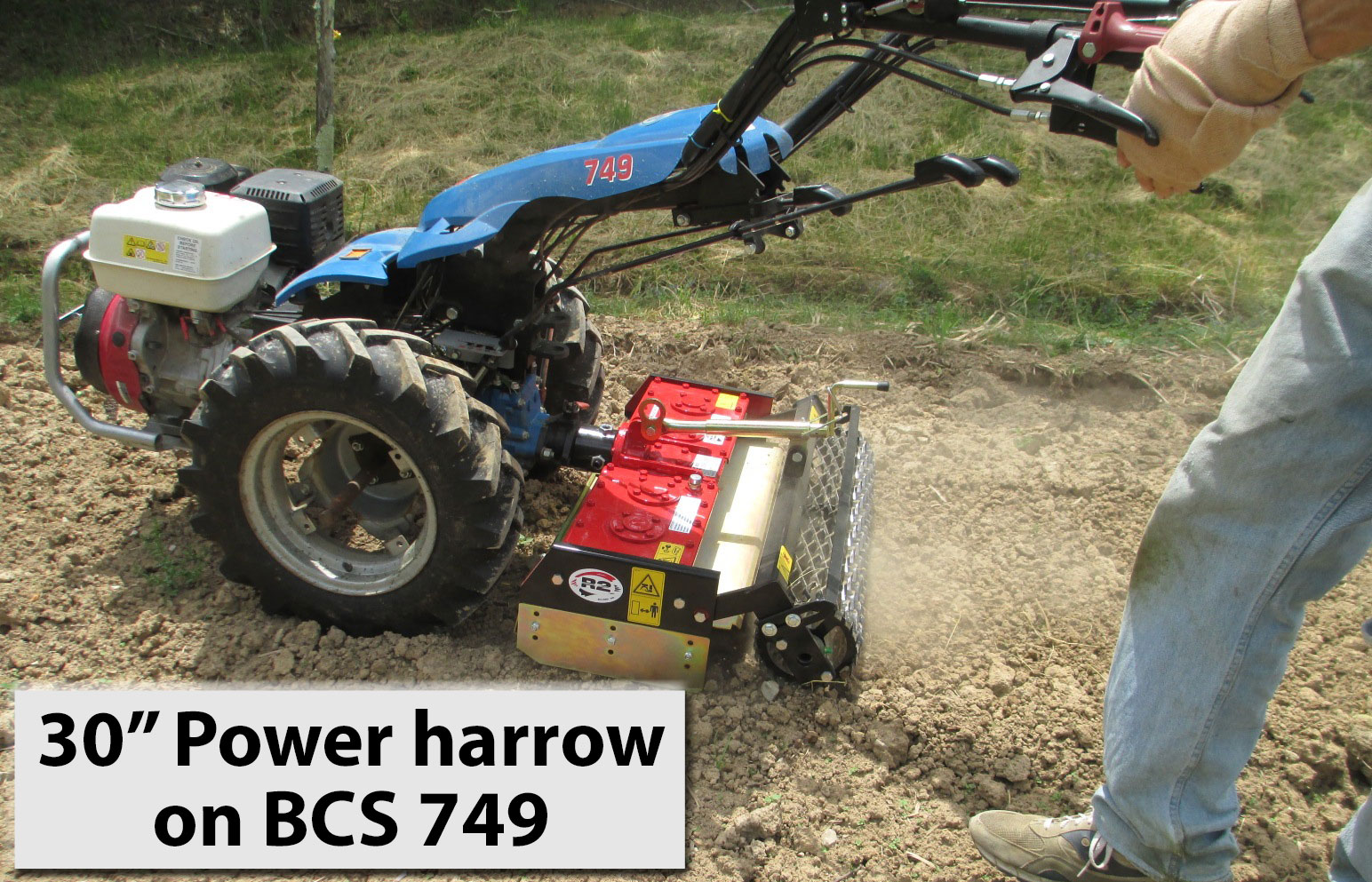 Source these from your local dealer so you can get parts and maintenance if required Source these from your local dealer so you can get parts and maintenance if requiredI don't have one of these, but a neighbour does, and I've seen it in action. If I was to start all over equipping my farm, this would be my first choice for garden prep work. For mechanization on a small scale, a 2-wheel tractor is a versatile option. With interchangeable attachments such as tillers, mowers, and plows, and the power harrow shown, this compact machine can handle various tasks, from tilling the soil to maintaining your farm's infrastructure. And it costs a fraction of the price of a full-size tractor. Preparing the soil for planting can be labor-intensive, but a power harrow can make the task more manageable. This implement creates a fine seedbed, improving seed germination and plant growth. Because the depth of cultivation can be managed, it's a great tool to use when stale seed bed planting. 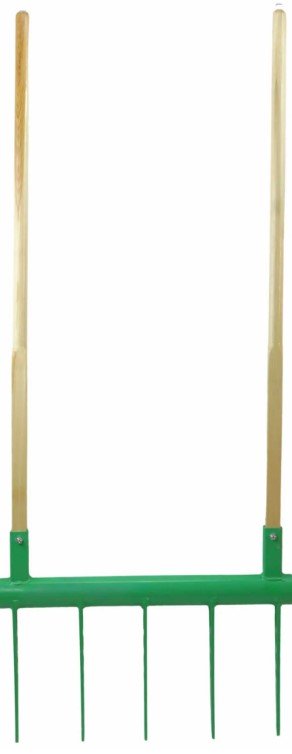 A versatile and efficient tool for bed prep A versatile and efficient tool for bed prepBroadfork I'm seeing the broadfork used more and more by market gardeners. It's especially useful for preparing permanent raised beds. A broadfork loosens soil without flipping or heavily mixing layers. This helps preserve soil structure and encourages beneficial microbes, earthworms, and other organisms to thrive, leading to healthier soil. There is really no other hand tool that can replicate this. By loosening soil at a deeper level without disrupting the topsoil layer, a broadfork helps reduce compaction and improves root penetration and water infiltration. This is really useful in heavy clay or compacted soils where traditional tilling might not reach deeply enough. Great for preparing and maintaining beds in your hoop house too. And, it's cordless! Micro-Farm Equipment for Cultivation
A trio of micro-farm scale equipment choices that save you time and money: silage tarps, the collinear hoe and the flame weeder. These three work together with your precision six-row seeder to keep your garden weed-free with less work. Silage tarps Silage tarps are primarily used to suppress weeds. By covering the soil, they block sunlight, which prevents weed seeds from germinating and growing. This is particularly helpful for reducing established weed pressure without herbicides. In as little as a few weeks, most weeds die off or become much easier to manage. The combination of tarping, flame weeding on pre-emergent beds, and the collinear hoe for cultivation can reduce the time and labour spent weeding by up to 90%/ 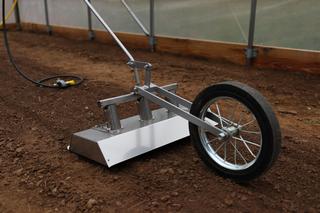 Image from Flameweeder.com Image from Flameweeder.comFlame
weeding goes hand-in-hand with stale seed bed planting to eliminate a LOT of
your weed problems in advance. Basically an oversize propane torch with a wide flame
spreader nozzle (or multiple nozzles) , the flame weeder needs to make only
brief contact with the weeds to kill them. Pre-sprout weeds for 3 weeks before planting then zap them with the flame weeder. 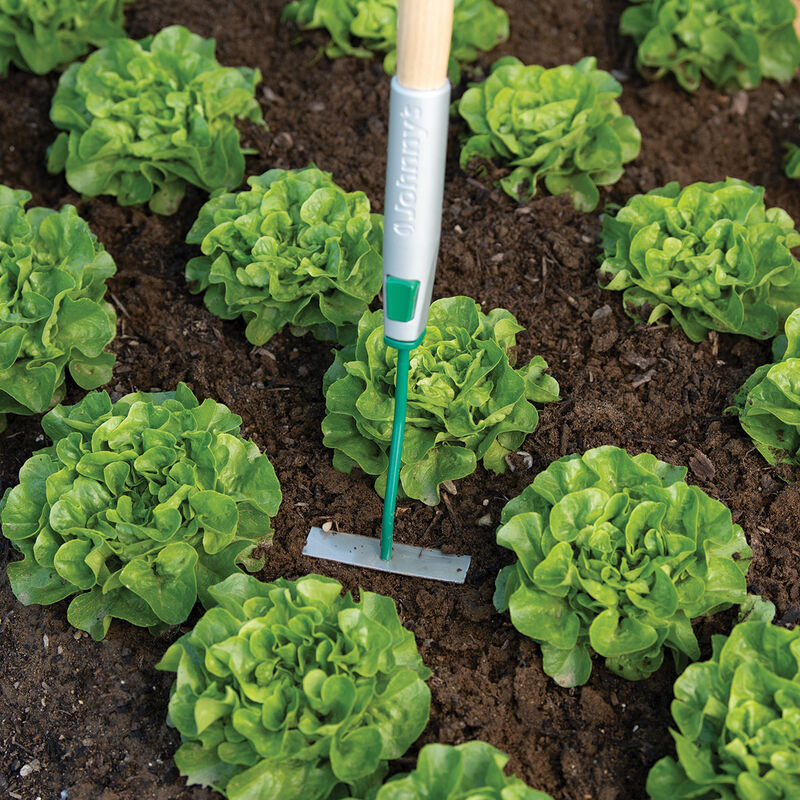 Image from Johnny's seeds Image from Johnny's seedsThe collinear hoe is a game-changer for small-scale farmers. With its razor-sharp blade, this tool allows you to slice through weeds just below the surface, minimizing soil disturbance and reducing weed regrowth. An because you have precisely spaced your seeds with your six-row seeder, the collinear how will make quick work of this chore. Usually comes with interchangeable cutting heads to accommodate different row spacing. Keep the hoe end razor sharp for effective cultivation. Micro-Farm Equipment for Irrigation
Conserving water while efficiently irrigating your crops is essential for small-scale farming. Micro-sprinkler and drip irrigation systems provide targeted watering, reducing water waste and promoting healthier plant growth. The key here is your garden layout. Group crops together that prefer overhead watering and those that prefer soil watering. With the use of rain gauges to measure precipitation and timers to manage the process efficiently, investing in proper irrigation equipment will save you time and money. It will also MAKE you money because more crops will get to market. Micro-Farm Equipment for Protecting Your Crops
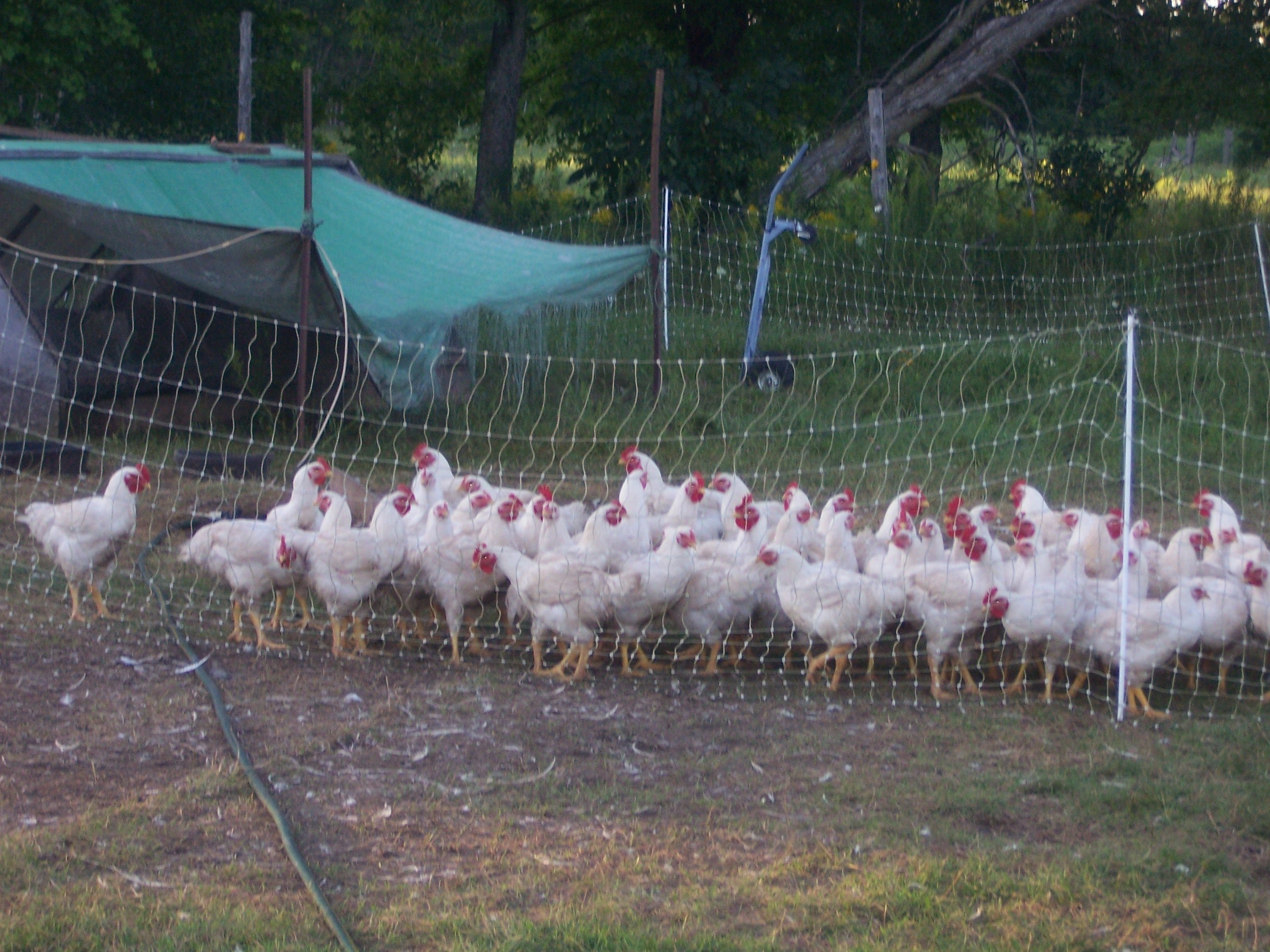 Our meat birds, NOT on the garden Our meat birds, NOT on the gardenFence Charger and Electric Fence Protecting your crops and livestock is vital, and a fence charger and fence system can provide the necessary security. Choose an electric fence charger suitable for your needs and install a well-built fence to deter unwanted pests and keep your animals safe. If you integrate livestock into your micro-farm operation, electric fencing will keep them where you want them and out of where you don't. MIcro-Farm Equipment for Protecting Your Harvest
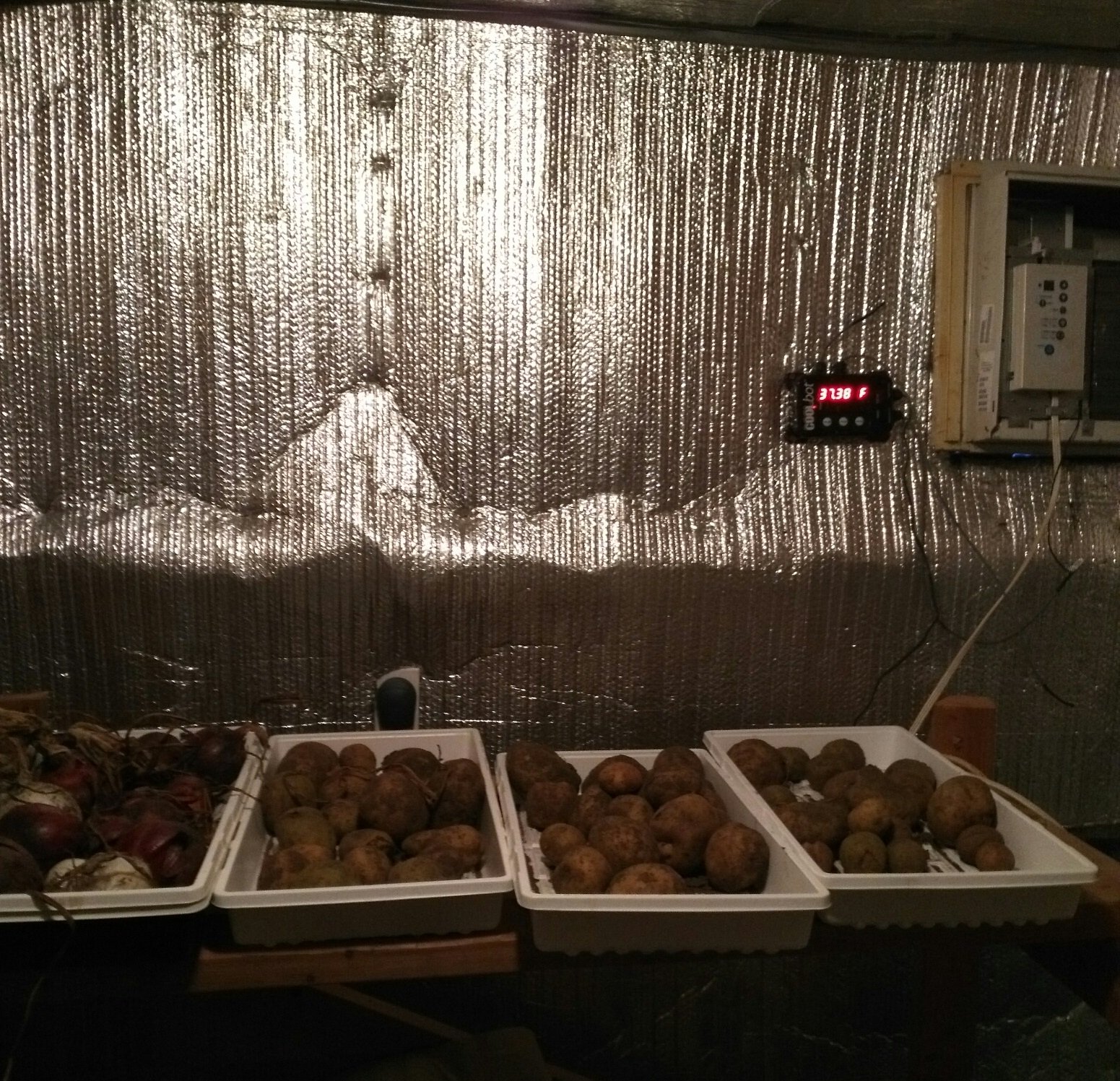 You can see the CoolBot on the wall. You can see the CoolBot on the wall.Cold Storage. Just like protecting your garden, you need to take care of your crops once harvested. The first year of our CSA market garden we got by with a couple used refrigerators to keep the veggies cool. But we quickly outgrew that, and built a cold room powered by a 10,000 BTU room A/C and controlled by a CoolBot unit. If you are going to take the trouble to grow great veggies, keep them in top shape for your customers with a cold room. You can see more about CoolBot here. One Last Suggestion
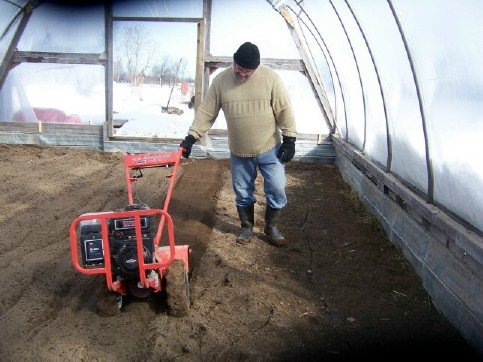 Me in my hoop house February, in Canada, 2 feet of snow outside Me in my hoop house February, in Canada, 2 feet of snow outsideNot equipment per se, but I believe every micro-farm should be equipped with a hoop house (high tunnel). There is no cheaper covered space that can save you money by growing your own transplants and make you money by extending your growing season. My hoop house has paid me back many times over the cost of construction by allowing me to grow crops earlier in the spring and later into the fall, and also grow bedding plants for sale. Get Equipped and Get GrowingEquipping your micro-farm with the right tools and equipment is key to success. From soil preparation to irrigation and harvest, each tool plays a vital role in optimizing productivity and efficiency on your small-scale farm. Whether you're a passionate backyard gardener or aspiring to become a full-fledged micro-farmer, investing in these essential tools will empower you to create a thriving agricultural venture. Choose the implements that align with your farm's needs, and get ready to cultivate the bounty of your small-scale farm. Free Guide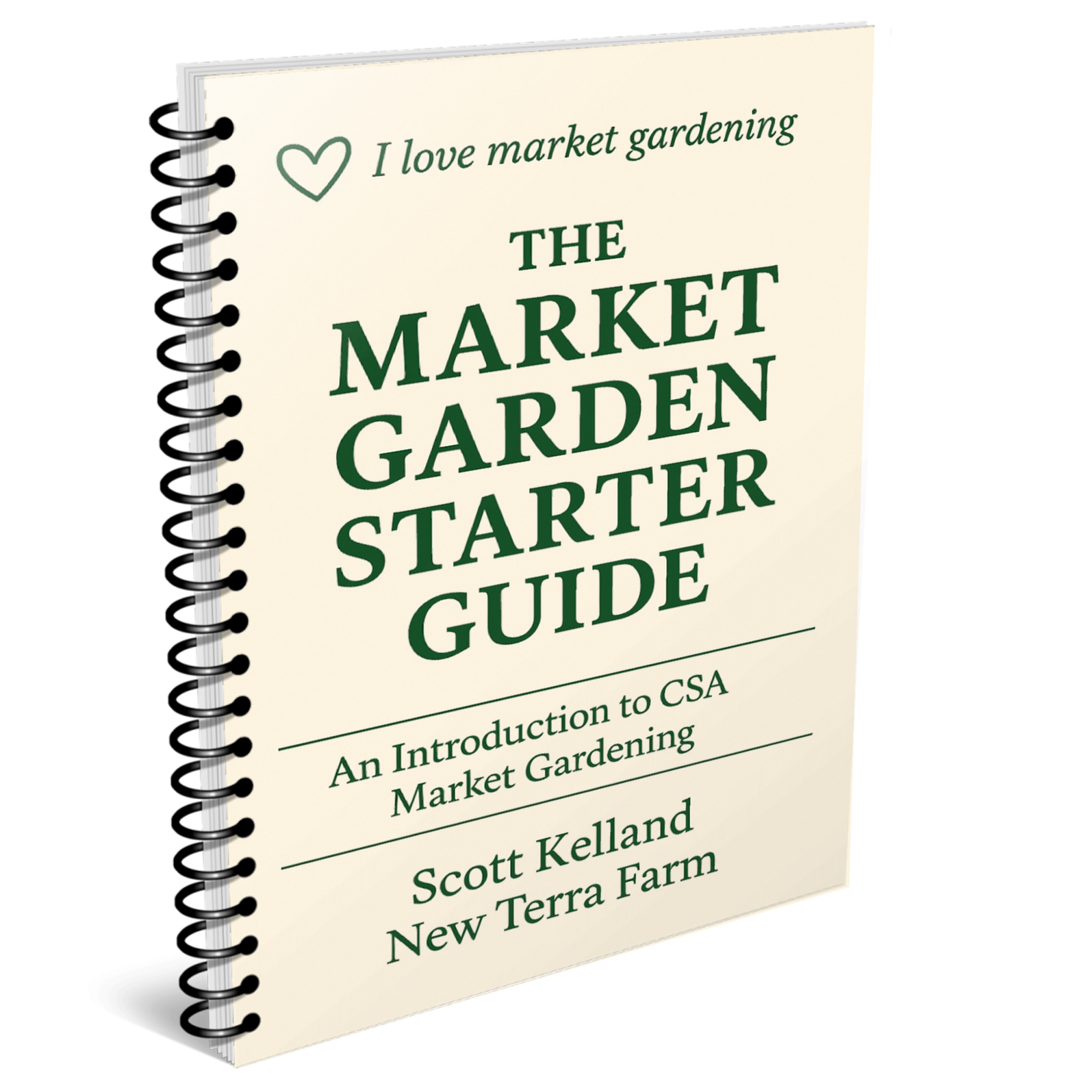 The consumer demand for fresh local organic food has never been higher. Bad news on the supply chain is good news for local growers. Get my free Organic Market Gardener Start-up Guide and see if this is the right time to launch your CSA market garden business. Enter your best email and the Guide will be sent to you right away. Resources for 'Micro Farm Equipment'Chapter 7 - Off-grid Power: The Self-Sufficient Backyard No matter who and where you are, the goal should be the same: be as self-sufficient as you can on your own small property: The Homesteader Book Bundle If you need to build it the plan is in here: 16,000 Woodworking Plans
|
See Something You Like? Share!
Got questions to ask, stories to tell?
Share your organic market gardening question, or comment, or story.
I'm an affiliate for some products I promote on this site. This means I get a small commission for a product you buy through a link on one of my pages. This doesn't cost the buyer anything, but provides me an additional income to help support these pages.
Recent Articles
-
Farm grown reviews of products recommended by New Terra Farm
Dec 04, 25 06:26 AM
Find great farm and garden products in my farm grown reviews -
Best Chicken Coop and Accessories for Small Farms and Homesteads
Nov 30, 25 09:18 AM
Looking for the best chicken coop? Here are the top coops, accessories, nest boxes, and gear to build a safe, productive poultry setup. -
Community Supported Agriculture Marketing Ideas To Sell Out The Season
Nov 05, 25 05:18 AM
Authentic Community Supported Agriculture marketing ideas to grow loyalty, boost sign-ups, and sell out your CSA every year
